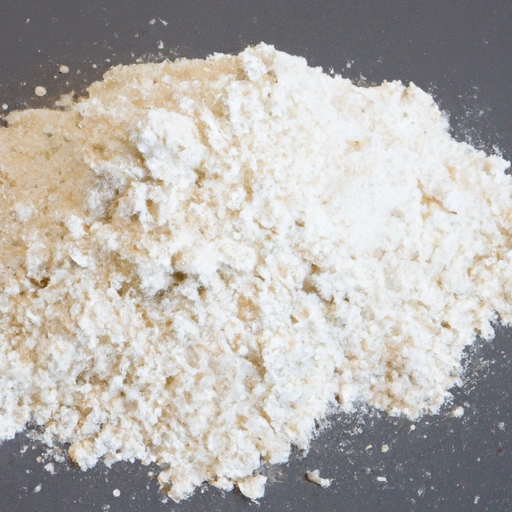Oat Flour
Description

Oat flour is a finely ground flour made from whole oat grains. Unlike traditional wheat flour, oat flour is gluten-free, making it a popular choice for individuals with gluten sensitivities or those looking to add variety to their diet. Oat flour is known for its mild, slightly nutty flavor and is capable of adding moisture and tenderness to baked goods. It is a whole grain flour, meaning it contains all parts of the grain: the bran, endosperm, and germ, thus providing a wealth of nutrients.
Common uses
Oat flour is commonly used as a substitute for wheat flour in recipes. It's a favorite for making muffins, pancakes, bread, and cookies. Additionally, it can be used as a thickening agent in soups and stews or to coat foods before frying. Oat flour is often blended with other flours to improve the nutritional profile of a dish while maintaining desired textures.
Nutritional value
Calories
In a 1/4 cup serving (30 grams or approximately 1 ounce), oat flour contains around 120 calories.
Protein
Oat flour offers about 4 grams of protein per serving, serving as a good plant-based protein source.
Fat
With only 2.5 grams of fat per serving, oat flour provides a low-fat component to recipes.
Carbohydrates
Oat flour contains about 22 grams of carbohydrates per serving, out of which 3 grams are dietary fiber.
Vitamins
Oat flour is a source of B-vitamins, particularly B1 (Thiamine) and B5 (Pantothenic acid), which aid in energy metabolism.
Minerals
It is rich in essential minerals such as iron, magnesium, phosphorus, zinc, and manganese.
Health benefits
Oat flour is beneficial for heart health due to its high soluble fiber content, which can help lower cholesterol levels. The fiber also aids in digestion and helps provide a feeling of fullness, which can contribute to weight management. Being gluten-free, it is also suitable for those with celiac disease or gluten intolerance.
Potential risks
While oat flour is naturally gluten-free, it is sometimes processed in facilities that handle wheat, which can lead to cross-contamination. Those with severe gluten allergies should ensure their oat flour is certified gluten-free. Overconsumption of oat products can lead to excessive fiber intake, which might cause gastrointestinal discomfort in some individuals.
Common recipes
Oat flour is frequently used in gluten-free baking recipes such as bread, cookies, muffins, and pancakes. It can also be used to make homemade oatmeal or added to smoothies for extra fiber.
Cooking methods
Oat flour can be used in the same manner as wheat flour in baking. It can also be toasted gently to enhance its nutty flavor before incorporating it into recipes.
Pairing with other ingredients
Oat flour pairs well with warm spices like cinnamon and nutmeg, fruits such as apples and bananas, and sweeteners like maple syrup and honey.
Summary
Oat flour is a nutritious, gluten-free flour alternative that can be used in a variety of dishes. It contributes a rich, nutty flavor and moist texture to baked goods, making it a valuable ingredient for those looking to diversify their cooking and baking repertoires. With its substantial health benefits and ease of use in recipes, oat flour is a versatile ingredient that appeals to a global audience.